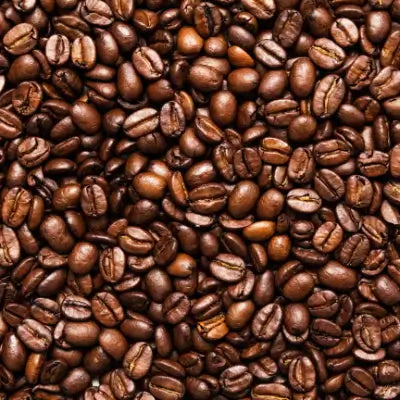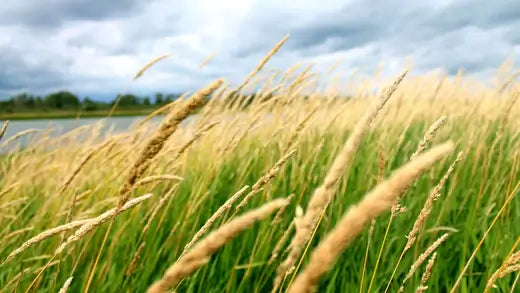Characteristics of Ferns
The Fern class is a group of non-flowering, herbaceous vascular species with stems, roots, and leaves that reproduce through spores. The ferns form an old category of vascular plants, some as old as their ancestors in the Carboniferous Period (beginning about 358.9 million years ago) and possibly older.
Their life cycle, which relies on spores to disperse, was long before the seed-plant life cycle. Another term used to describe the monilophytes group is monilophytes. It is now widespread in botanical literature. Ferns distinguish from regular gardeners due to their absence of seeds and flowers.
Ferns Have Stemlike Rhizomes
In contrast to the standard stems for most species, One of the features of ferns is the presence of rhizomes. A Rhizome is a distinct stem that resembles a root. In most temperate-zone fern species, the rhizome is underground and has roots connected to it. Fronds typically join the rhizome through an elongated stalk, known as the scientific term stipe. The frond's structure, rhizome, and stipe are significant in determining the species.
Spores and Sporangia
Instead of seeds, ferns create tiny spores. The capsules that grow spores, also known as sporangia, form clusters known as sori. They are often mistaken for scale insects; sori find in distinct forms, patterns, and spots that distinguish different fern species. In certain types of ferns, the leaf section is rolled over and shields the sori. Others have protective disc-shaped flaps, known as indusia.
Reproductive Characteristics of Ferns
Spores are only the beginning stage in the process of reproduction for ferns. Spores in suitable conditions develop into simple heart-shaped plants measuring 1/2-inch wide called prothallia. These plants are obscure and create male and female organs. If there is enough moisture, fertilization may occur, and new ferns will eventually emerge. Some desert ferns reproduce without fertilization or water. However, most ferns require humidity.
Habitats essential for reproduction and survival are moist places with shade and humid conditions, which can retain moisture throughout the year. Few ferns can tolerate direct sunlight, low humidity, or deep shade. Evergreen species are tolerant of the lowest light levels. The more sunlight exposure, the more significant amount of water ferns need.
Leafy Fronds on Ferns
A fern frond starts at the rhizome. It ends in the leaf tip. The fern frond grows by a leaf bud, the Crozier. The Crozier coil is in all species, and the frond's apex is in the middle. This type of leaf arrangement inside buds is known as the circinate vernation. Circinate vernation finds in several other seeds but not in other free-sporing plants.
When a bud grows that has circinate vernation, cell cells on the one end of the coil expand faster than the cells on the other, and the frond gradually unfolds and becomes an adult leaf. Certain types of ferns have edible fronds, while others don't. Small scales and hairs on certain fronds reflect light and produce vibrant foliage.
Various details of ferns are the following:
Cinnamon Fern
Cinnamon ferns are typically found in wetland zones and usually locates in swamps, bogs, and creeks in the natural world. They are also famous for their diverse applications in gardening and landscaping, especially in shaded areas. They are excellent groundcover plants to add interest to flower beds, as a foundation for planters, and as a decorative species.
The delicate new fronds will appear in early spring and shed tender leaves. The ferns get longer and wider for a few weeks, producing lively green leaves that appear in pairs and feature a softly toothy edge. In summer, the fertile fronds produce spikes. The points will get larger as they age and change to an intense, deep cinnamon hue.
Leatherwood Fern
The Leatherwood fern is a challenging and climate-tolerant North American native species that can stand up to some of the coldest regions in the adjacent United States. The plant is semi-evergreen, as sure leaves can droop or become dormant on cold days and then open again once it becomes warmer.
Leatherwood fern gets its name because of the textured, leathery leaves. The plant grows to the size of 2' tall and wide. The stems are light brown, and the leaves are tan. Fronds have six" long compound leaves that measure 6 inches long. They typically feature a vibrant, relaxed, or blue-green color even through winter.
New York Fern
New York ferns are popular landscaping choices because of their distinctive aesthetic qualities and benefits. New York ferns characterize by beautiful, delicate looks that add a touch of elegance and softness to any garden. They are graceful and long, with fronds that arc over and create an enchanting, lush, and lush green backdrop.
New York ferns are easy to maintain and require little maintenance. They thrive in shaded, moist zones and can withstand various soil conditions. New York ferns' extensive root system aids in stabilizing soil, stopping erosion on banks and slopes.
A New York fern grows in the forest, in wetlands with shallow depths, wooded ravines, and close to streams. It's exceptionally tolerant to shaded and mixed regions. The species can tolerate filtering sunlight. However, you'll have the best results if the plant is in the shade.
A New York fern needs to be more specific about the soil's quality. Like other plants, New York ferns absorb carbon dioxide and enhance air quality. New York ferns can help by using the sound wave and forming a natural sound barrier. The scent and appearance of plants can improve moods.
Bracken Fern
Bracken ferns are found in meadows, woodlands, and other grassy regions. They grow with little or little care and require a shaded spot with a woody, rich organic material, similar to its native forests, and moist but not soaking wet soil. Bracken fern reproduces with no effort from you.
It reproduces by tiny spores, like dust separating from the fronds' bottom. The wind transports the spores to nearby areas, where they then germinate and develop to become new plants. This reproduction process is the reason this fern is an adored Groundcover species.
The bracken fern recognizes by its large triangular fronds. It can reach a waist-high height and has large plume-like stems. They have triangular fronds. They show leaflets that develop in pairs. The leaf color can range from a lighter, softer hue of green to dark green, according to the soil. The stems appear slightly more delicate than the leaves, making a stunning tonal impact.

















































